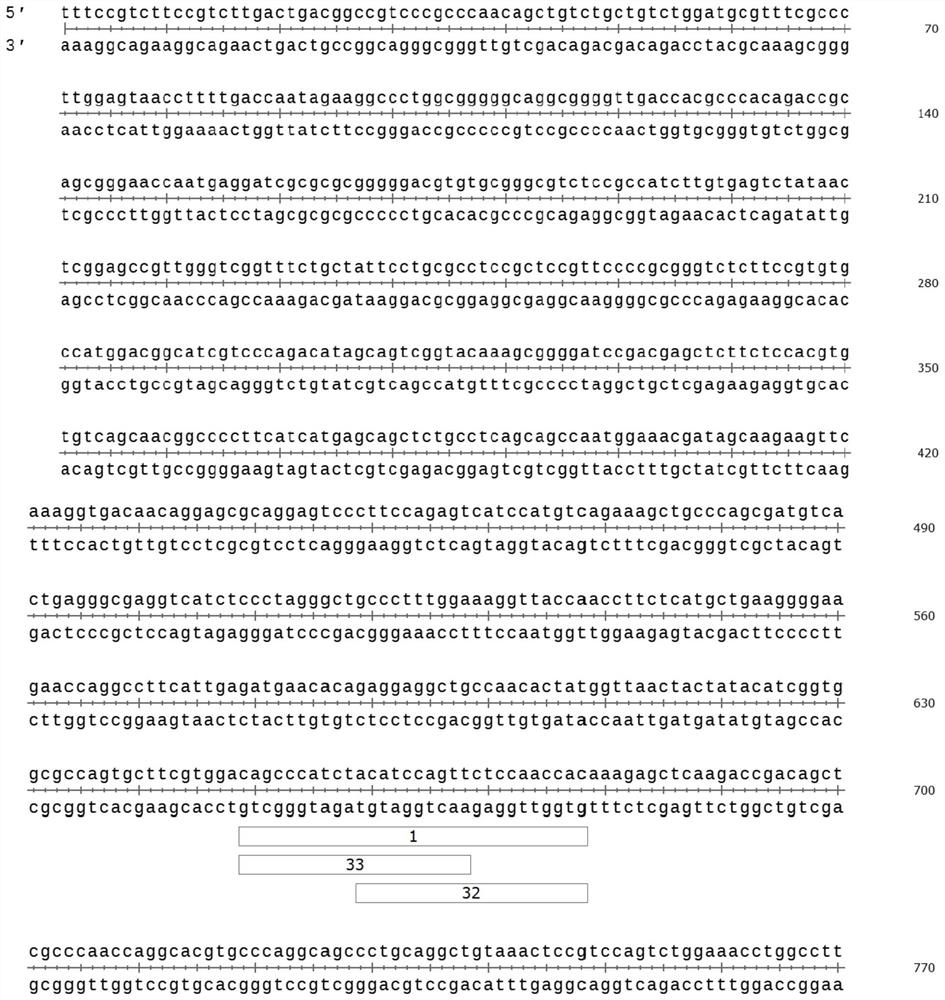SgRNA and application thereof
A targeted and basic sequence technology, applied in sgRNA and its application fields, to achieve high editing efficiency, knock down the level of PTBP1mRNA, and reduce the level of the effect
- Summary
- Abstract
- Description
- Claims
- Application Information
AI Technical Summary
Problems solved by technology
Method used
Image
Examples
Embodiment
[0061] 1. Design and construction of sgRNA vector
[0062] 1. sgRNA design.
[0063] The sgRNA targeting PTBP1 mRNA is designed, and its targeting domain sequence (reverse complement to the target sequence on the mRNA molecule) is 20-30nt in length.
[0064] The targeting domains of the designed sgRNAs are shown in Table 1 below. Figure 2-12 The target position of the designed sgRNA on PTBP1 mRNA is shown, wherein the box indicates the target site of the sgRNA, and the number in the box is the number of the sgRNA.
[0065] Among them, sgRNA 1-11 and sgRNA 32-50 designed by the present invention were used in the following plasmid transfection mouse N2A cell experiment. In the following experiment of plasmid transfection into human 293T cells, the sgRNA 1-89 designed by the present invention was used.
[0066] Among them, sgRNA 1-11 and sgRNA 32-50 target human and mouse homologous sequences.
[0067] sgRNA 1-20 and sgRNA 32-67 can target the CDS region of human PTBP1 mRNA....
PUM
 Login to View More
Login to View More Abstract
Description
Claims
Application Information
 Login to View More
Login to View More - R&D
- Intellectual Property
- Life Sciences
- Materials
- Tech Scout
- Unparalleled Data Quality
- Higher Quality Content
- 60% Fewer Hallucinations
Browse by: Latest US Patents, China's latest patents, Technical Efficacy Thesaurus, Application Domain, Technology Topic, Popular Technical Reports.
© 2025 PatSnap. All rights reserved.Legal|Privacy policy|Modern Slavery Act Transparency Statement|Sitemap|About US| Contact US: help@patsnap.com



